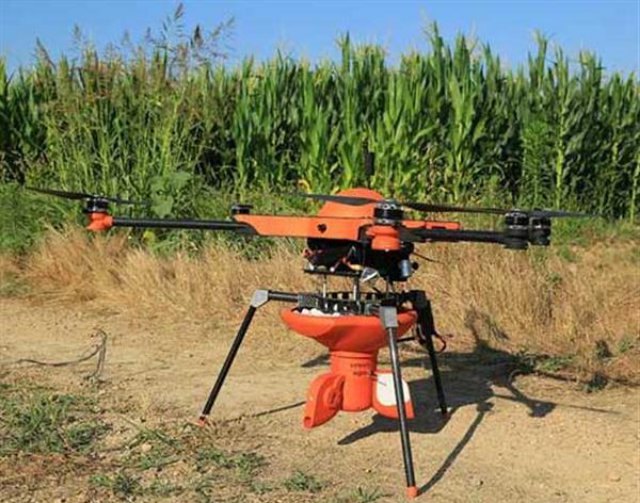Italian drone company Soleon has been using 3D printing to reduce the weight of drone components, improving the efficiency of its unmanned aerial vehicles (UAVs). One of its latest products, SoleonAgro, is an agricultural pest control drone with a laser sintered polyamide body.
For those of us who don’t work in agriculture, our knowledge of crop dusting is limited to a handful of scenes in the Will Smith sci-fi movie Independence Day. We know it has something to do spraying crops with chemicals, we know aircraft are involved somehow, and we think there is some connection with aliens in there too.
In all seriousness, crop dusting (or “aerial application” as it is now more commonly known) is an important part of agriculture, as it helps crop owners distribute huge amounts of crop protection products over large areas. The aircraft used to spray these products are even sometimes used to fight fires: load up their tanks with water instead of chemicals, and you have a vehicle capable of dropping large amounts of water over otherwise unreachable blaze.
 s.
s.
In recent decades, unmanned crop dusting vehicles have become more common, and the recent drone craze has only served to accelerate the trend. One company developing such crop dusting drones is Soleon, an Italian UAV specialist that has been in the business since 2009. Using 3D printing services to create lightweight components for its drones, Soleon recently unveiled SoleonAgro, a drone made for biological pest control.
Although it could be used in a number of agricultural situations, SoleonAgro was actually built with one particular target in mind: the corn borer, a flying pest which chomps its way through maize stalks, causing a large number of crops to be destroyed each year. But unlike many pest control solutions, the SoleonAgro is not designed to distribute chemicals, which can be harmful to both the crop and animals across the food chain (including humans).
Instead, the 3D printed drone distributes the eggs of the Trichogramma, a species of wasp that has a keen appetite for the corn borer. This genius solution has a number of benefits: it’s natural, it’s eco-friendly, and it’s a devastatingly effective way of preserving maize crops. By distributing these wasp eggs evenly and efficiently, the 3D printed SoleonAgro drone can be an incredibly useful agricultural tool. It even looks like a wasp!
Soleon produces a number of customer-specified drones besides the SoleonAgro, each of which has its own distinct purpose. The company uses 3D printing for many of these UAVs, harnessing the power of Materialise’s 3D printing service for both rapid prototyping and end-use part production. The end-use 3D printed parts need to be particularly lightweight in order to maximize battery power and increase flying time.
For the SoleonAgro, Materialise used a laser sintering 3D printer to print the drone body and parts in PA 12 (polyamide) and PA-GF (polyamide filled with glass particles). PA 12 is durable and lightweight, while the glass-filled PA-GF is more rigid and less vulnerable to vibration. PA-GF was therefore used for parts close to the motor.

“The big advantage of 3D Printing is that we can very quickly create complex systems, even in small quantities,” said Soleon’s Michael Überbacher. “Normally the parts are printed and sent within one week. As a small company, this offers us the opportunity to react very quickly to the changes and wishes of our customers.”
“We’ve managed to make the SoleonAgro the most cost-efficient and best [performing] solution on the market,” Überbacher added.
Source: 3ders

